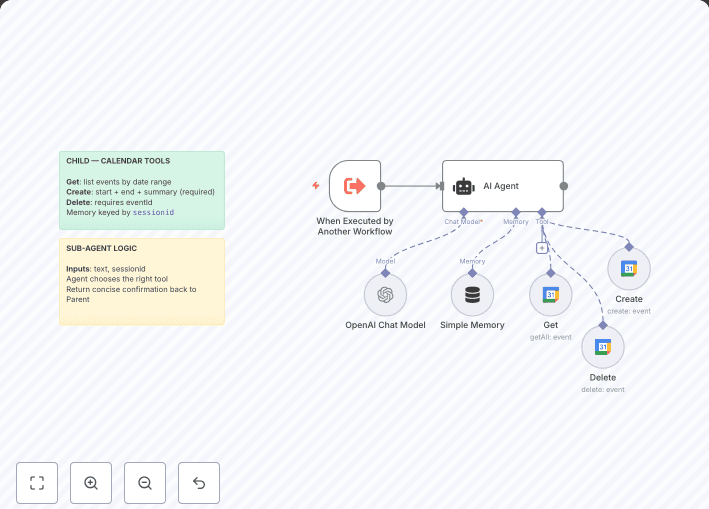Monthly Energy Generation Report (PostgreSQL → PDF → Email)
This workflow automatically collects monthly energy generation data from a PostgreSQL database, converts it into a structured PDF report and emails it to stakeholders. It eliminates manual report creation and ensures timely delivery of performance summaries.
Who’s it for
- Energy companies monitoring solar, wind or hydro generation
- Operations & maintenance (O&M) teams needing monthly summaries
- Managers and executives who require periodic performance reports
- Data analysts who want automated reporting instead of manual exports
How it works
- Monthly Trigger → Schedules the workflow to run once a month.
- Postgres Node → Fetches energy data from the
energy_data table.
- Code Node (Transform Data) → Structures the raw records into JSON with metadata (
date_range, records, note).
- HTTP Request (PDF.co API) → Converts structured data into a formatted PDF report.
- Gmail Node (Send Report) → Sends the PDF report (or link) via email to the configured recipient.
How to set up
-
Import the workflow JSON into n8n.
-
Configure credentials:
- PostgreSQL connection (DB host, user, password, database, schema).
- Gmail OAuth2 credentials.
- PDF.co API key (for HTML → PDF conversion).
-
Update:
- Database table (
energy_data).
- Email recipients in the Gmail node.
- PDF template (if custom formatting is required).
-
Activate workflow.
Requirements
- n8n (self-hosted or cloud)
- PostgreSQL database with energy generation data
- PDF.co API account with valid API key
- Gmail account with OAuth2 access
- Internet access for API calls
How to customize
- Change the SQL query in the Postgres node to filter specific plants or date ranges.
- Update the Code node to add extra fields (e.g., average power, anomalies).
- Modify the PDF.co request body to use a custom HTML template for branding.
- Replace Gmail with Outlook, SMTP, or Slack for distribution.
Add-ons
- Add Slack/Teams node to notify teams when reports are sent.
- Store PDFs in Google Drive or S3 for archival.
- Add a dashboard (e.g., Grafana or Superset) that references the same DB for real-time view.
- Integrate with Jira to auto-create tasks for underperformance alerts.
Use Case Examples
- Solar company emailing monthly reports to plant owners.
- Wind farm operator generating regulatory compliance reports.
- O&M teams automating KPI summaries for executives.
- Consulting firms monitoring multiple clients’ energy production.
Common Troubleshooting
| Issue | Possible Cause | Solution |
|---|
| Workflow does not trigger | Cron not set correctly | Verify Schedule Trigger node interval is monthly |
| No data returned from Postgres | Wrong schema/table or DB creds | Check DB connection and table name |
| PDF not generated | Invalid/missing PDF.co API key | Generate a new key in PDF.co dashboard |
| Email not sent | Gmail OAuth expired or wrong recipient | Reconnect Gmail credentials and confirm recipient email |
| PDF output malformed | Incorrect JSON → HTML conversion | Check Code node formatting and PDF.co request body |
Need Help?
Our n8n workflow automation experts at WeblineIndia can help you:
- Set up the PostgreSQL connection securely,
- Customize the PDF layout with your company branding,
- Add more delivery channels (Slack, Teams, S3),
- Extend reporting logic (KPIs, charts, anomaly detection),
- And so much more.


